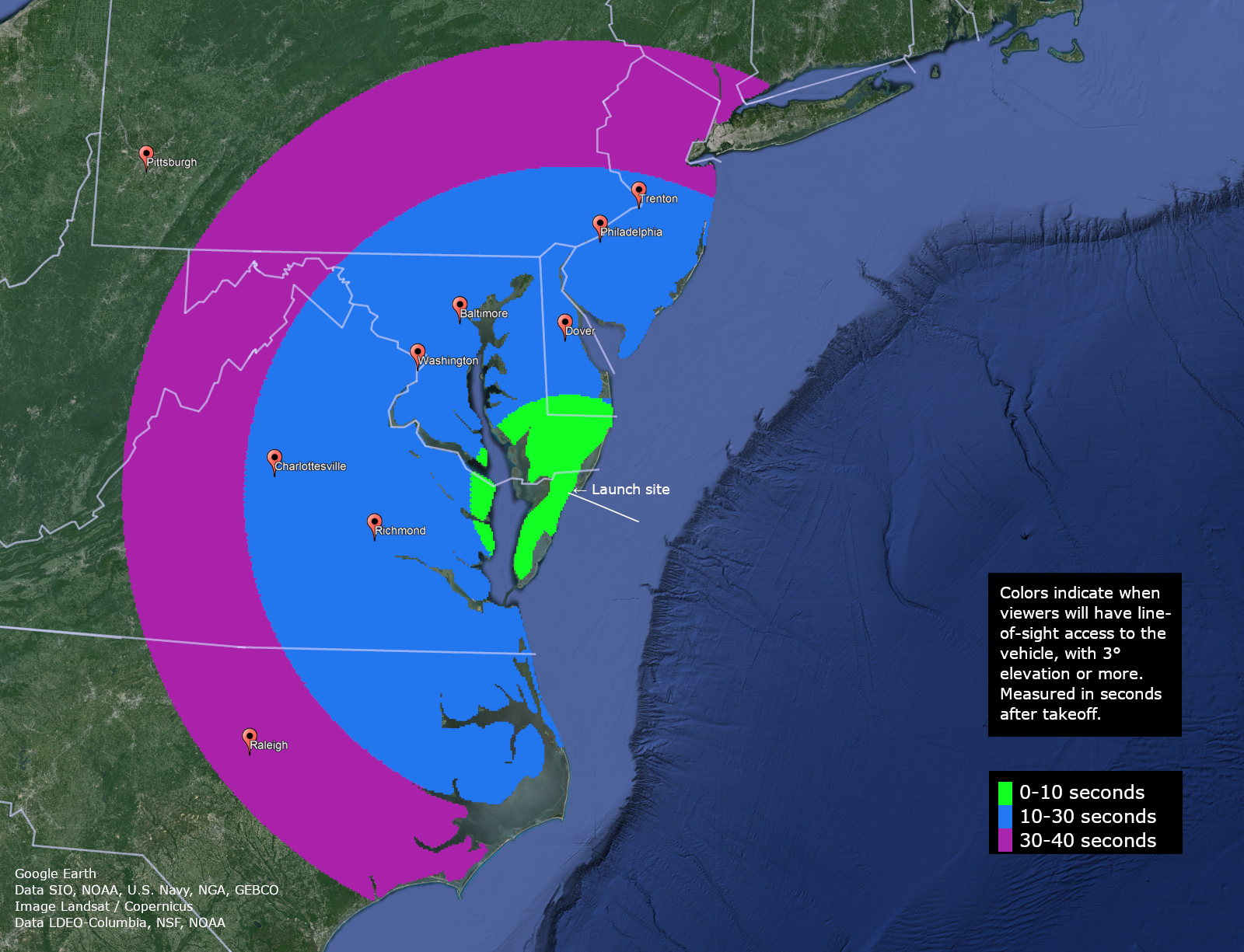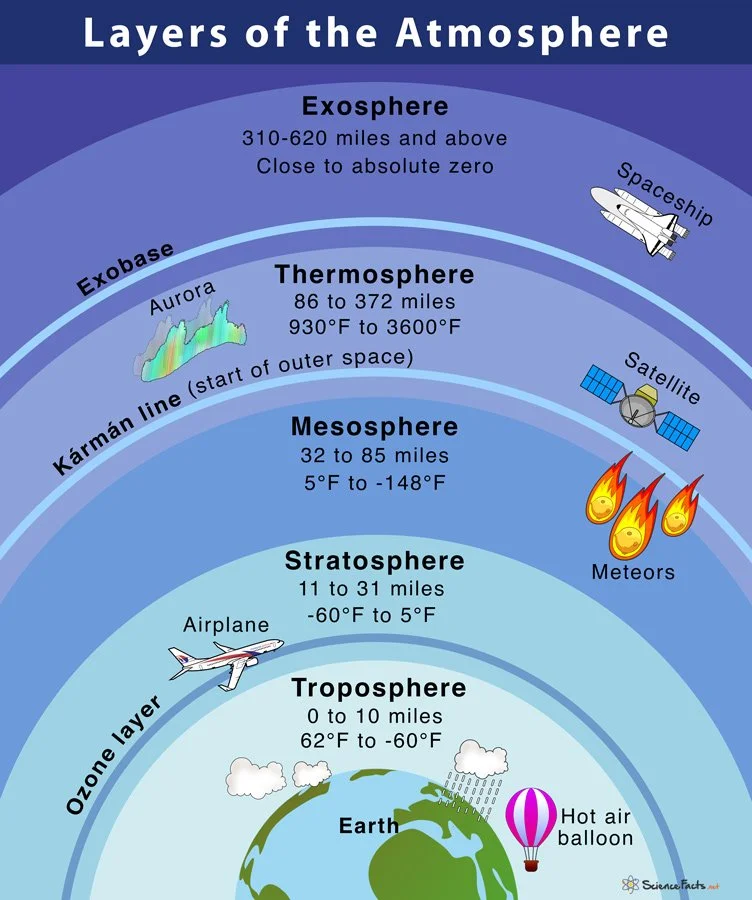UPDATE - *NASA Wallops Island launch scrubbed for Monday night...now set for Tuesday night at 10:30pm*
Paul Dorian
NASA’s launch of three sounding rockets later tonight may be visible throughout the Mid-Atlantic region depending on weather conditions and right now it looks quite favorable with mainly clear skies expected. Map courtesy NASA
UPDATE: Launch scrubbed for Monday night…now set for Tuesday night at 10:30pm
Overview
A sounding rocket mission from the NASA Wallops Island Facility in Virginia that was set for Sunday night has been rescheduled to later tonight with a launch window from 10pm to 3am. The TOMEX+ mission was cancelled last night due to local cloud cover and high seas in the recovery area left behind by Hurricane Erin. Those in the Mid-Atlantic region may be able to catch a glimpse of the rockets depending on the weather conditions, and it is currently looking quite favorable for viewing later tonight. According to NASA, the main purpose of the mission is to investigate the “mesopause” which is one of the planet’s most turbulent atmospheric regions.
Different layers of the atmosphere are shown on this graphic with this upcoming mission aimed at investigating the mesopause…that boundary where Earth’s atmosphere transitions to outer space. Graphic courtesy https://www.sciencefacts.net/layers-of-atmosphere.html
Details
Three sounding rockets for the TOMEX+ mission are expected to be launched later tonight at 10pm from the NASA Wallops Island Facility in southeastern Virginia. The launch window for later tonight extends from 10pm until 3am and the overall window for the mission runs through September 3rd. According to NASA, TOMEX+ - Turbulent Oxygen Mixing Experiment Plus – will investigate the mesopause which is one of the planet’s most turbulent atmospheric regions.
Noctilucent clouds captured over Solna in Stockholm, Sweden. Kevin Cho/ Wikimedia Commons/CC-BY-SA 3.0; https://www.thoughtco.com/noctilucent-clouds-4149549
The mesopause is a region of the upper atmosphere stretching from about 53 to 65 miles (85 to 105 kilometers) in altitude, at the boundary between Earth’s mesosphere and thermosphere. It is the coldest layer of our atmosphere, where icy noctilucent — or “night-shining” — clouds form and temperatures drop to nearly minus 148 degrees Fahrenheit (minus 100 degrees Celsius). The mesopause is a mixing ground where weather patterns from the lower atmosphere transfer energy upward into space, fueling turbulence that can increase drag on satellites. This layer’s role linking Earth to space makes it a priority for research. But, since the layer spans the Von Kármán line — the theoretical boundary where Earth’s atmosphere transitions to outer space — it is difficult to access, too high for weather balloons and too low for satellites. Many of its mysteries can only be explored using sounding rockets, which can be precisely aimed to reach specific altitudes.
The TOMEX+ mission will focus on a layer of atomic sodium in the atmosphere that peaks at about 56 miles (90 kilometers) altitude. This sodium layer forms from the constant influx of dust grain-sized meteors that burn up in the sky. A specialized laser aboard the TOMEX+ rocket, tuned to a wavelength that excites sodium atoms, will cause the sodium layer to fluoresce. This glowing band then becomes a natural tracer for atmospheric motions, allowing scientists to track its bends, ripples, and swirls as energy moves through the upper atmosphere. Those in the Mid-Atlantic region may be able to get a glimpse of the rocket launches depending on the weather and favorable conditions are likely…look to the southeast if in the DC metro area and to the southern sky if in Philly and NYC.
Follow live updates on Wallops Facebook and X, with a livestream beginning five minutes before launch.
Meteorologist Paul Dorian
Arcfield
arcfieldweather.com



